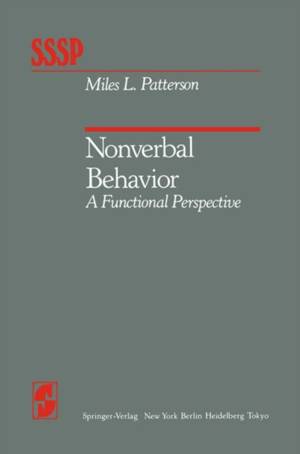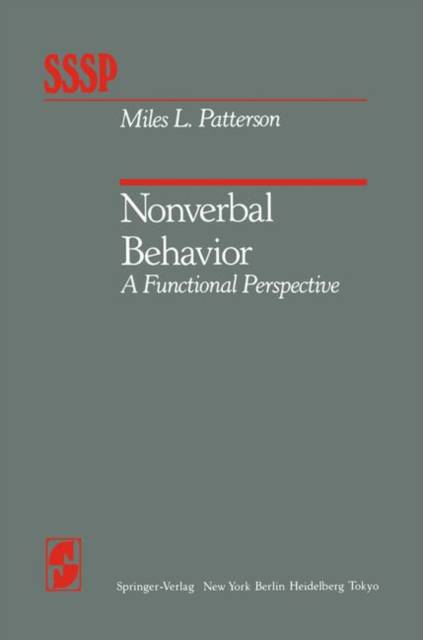
- Afhalen na 1 uur in een winkel met voorraad
- Gratis thuislevering in België vanaf € 30
- Ruim aanbod met 7 miljoen producten
- Afhalen na 1 uur in een winkel met voorraad
- Gratis thuislevering in België vanaf € 30
- Ruim aanbod met 7 miljoen producten
Zoeken
Omschrijving
My interest in nonverbal behavior has remained constant for over 15 years. I think this has been the case because nonverbal behavior has proved a very fascinating and challenging topic. Others might suggest that I am just a slow learner. With enough time in any area, however, one begins to feel that he or she has some special insights to offer to others. About the time that I was struck with that thought, approximately two and a half years ago, I was developing the first version of my sequential functional model of nonverbal exchange. It seemed to me that the func- tional model might provide a very useful framework for a book discussing and analyzing nonverbal behavior. I did not want (nor do I think I had the patience) to write a comprehensive review of research on nonverbal behavior. Other works, such as Siegman and Feldstein's (1978) edited Nonverbal Behavior and Commu- nication, and Harper, Wiens, and Matarazzo's (1978) Nonverbal Communication: The State of the Art, have provided excellent reviews of the research on nonverbal behavior. Instead, what I have tried to do in this book is to use nonverbal behavior as a vehicle for discussing social behavior. In a very real sense, this analysis of nonverbal behavior is a means to an end, not an end in itself. A consequence of this approach is that this review is a selective one, unlike the comprehensive works mentioned earlier.
Specificaties
Betrokkenen
- Auteur(s):
- Uitgeverij:
Inhoud
- Aantal bladzijden:
- 216
- Taal:
- Engels
- Reeks:
Eigenschappen
- Productcode (EAN):
- 9781461255666
- Verschijningsdatum:
- 8/10/2011
- Uitvoering:
- Paperback
- Formaat:
- Trade paperback (VS)
- Afmetingen:
- 156 mm x 234 mm
- Gewicht:
- 331 g

Alleen bij Standaard Boekhandel
+ 181 punten op je klantenkaart van Standaard Boekhandel
Beoordelingen
We publiceren alleen reviews die voldoen aan de voorwaarden voor reviews. Bekijk onze voorwaarden voor reviews.








